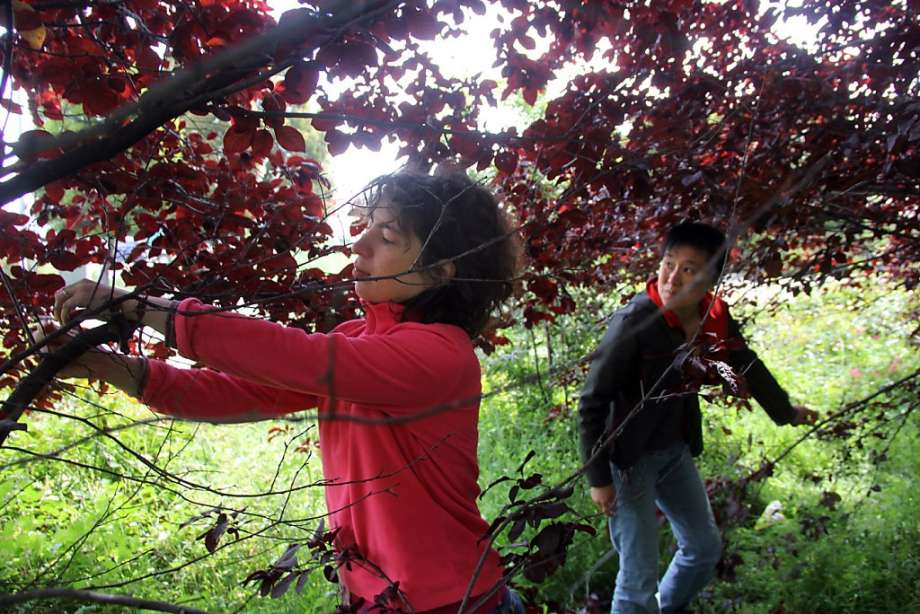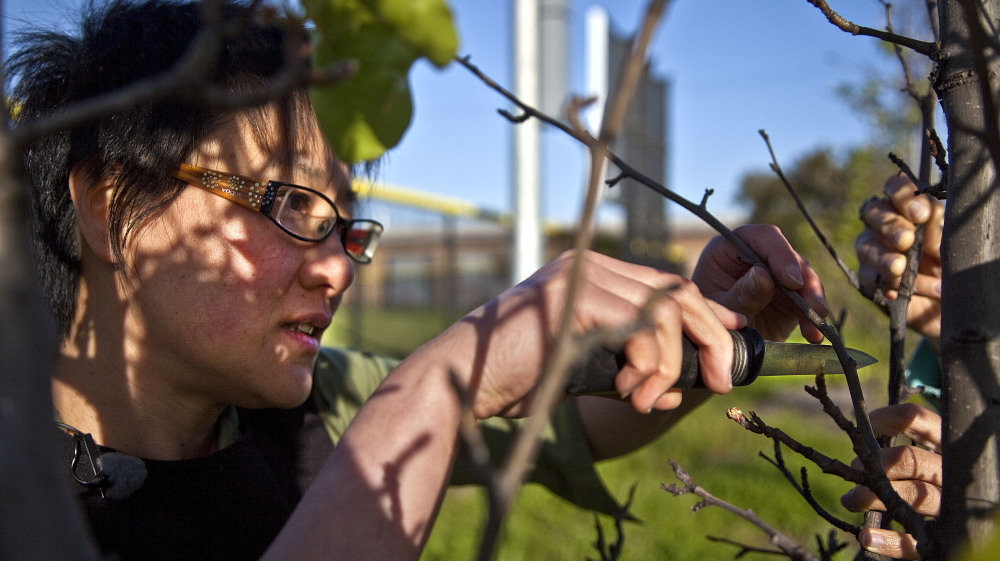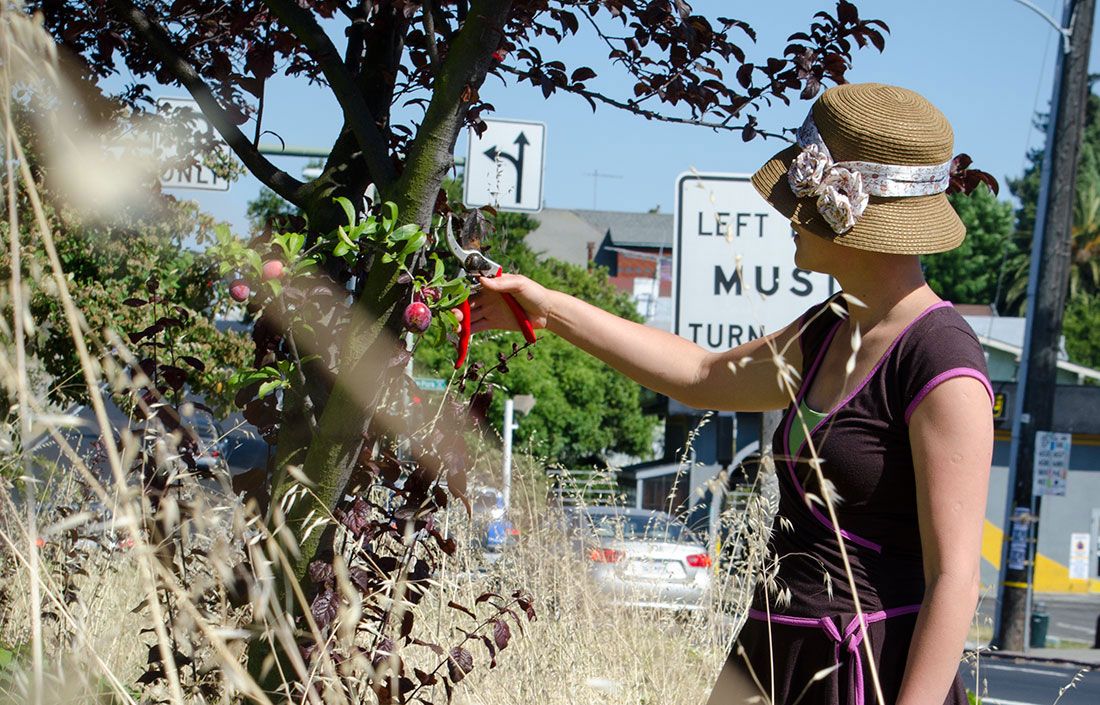
- Inspiring People -
- 5mins -
- 628 views
“Guerilla Grafters” secret night missions bear fruit… literally!
Rebellious Guerrilla Grafters have been grafting fruit-bearing branches onto non-fruit-bearing, ornamental urban trees, making delicious, nutritious fruit available to city residents.
Stealthy “Guerilla Grafters” Graft Fruit-Bearing Branches Onto Sterile City Trees
A group of food freedom fighters are sneaking out in the middle of the night—and sometimes even in broad daylight—and grafting fruit-bearing limbs onto sterile urban trees, bred specifically not to bear fruit. Known as “Guerilla Grafters,” their mission is to provide free, nutritious food where it’s needed most – urban food deserts.

Grafting branches onto trees is like “tongue and groove in carpentry,”
Have you ever wondered why none of the trees in big cities appear to produce anything useful, like fruit or nuts? According to the Guerilla Grafters, it’s because they are intentionally bred not to. City planners specifically select sterile varieties of many common fruit trees such as apples, pears, plums and cherries because of their beauty to decorate their streets.
However, they don’t want to be held liable for any potentially slippery messes fallen fruit could create on city sidewalks, or any animals it could attract (bees, birds, squirrels). It’s easy to image how quickly wildlife could become a problem in the concrete jungle… but maybe that’s the problem with our cities. They aren’t wild enough. At least that’s what the Guerilla Grafters think.
The movement started in 2012 in San Francisco, home to 10,000 fruitless fruit trees.
The group’s founder Tara Hui tried using all the legal avenues to get the city to legalise fruit trees, but went rogue when she realised that was getting her nowhere.
She has since formed a group of dozens of stealth grafters in the San Francisco Bay Area, with thousands of followers on Facebook, many of whom have formed grafting groups in their own cities.
Grafting branches onto trees is like “tongue and groove in carpentry,” Hui explained in RetunToNow.
The spliced branches are taped up in colour coded electrical tape, so volunteers can monitor the trees and make sure fruit is harvested and not wasted.
“Once it heals, it connects,” Hui said. “Basically the branch becomes part of the tree.”
And by that time, it’s too late for the city to do anything about it, the grafters boast.
“It’s like the gardener’s version of graffiti,” UC Davis landscape architecture professor Claire Napawan told the LA Times. “Even if there’s some question about its ability to produce enough food to make a difference … as an awareness piece, it’s a good idea.”
Source: ReturnToNow

How grafting works
Thousands of years ago, humans discovered that trees of the same species or even the same genus could be grafted together. We now know it is successful when the two plants are genetically compatible.
While grafting trees in the same species is preferred, said Theodore DeJong, a professor in the College of Agricultural and Environmental Sciences‘ department of plant sciences at UC Davis, grafts between trees in the same genus – such as prunus – can work.
For example, a fruiting cherry (Prunus avium), apricot (Prunus armeniaca) or plum (Prunus salicina) can successfully be grafted onto a non-fruiting plum (Prunus cerasifera). But DeJong also said grafting compatibility is "highly unpredictable."
The cleft graft, also called the wedge graft, is favored by Guerrilla Grafters. The end of the graft, known as a scion, is cut in the shape of a wedge and inserted into a V-shaped cut made into the end of a branch of the tree to be grafted, known as the stock.
"The most important thing in any type of graft is that the cambia – of scion and stock – meet and there is some pressure pushing the cambia together," said DeJong. "That stimulates cell division and a sort of knitting together of the two sides."
A tight fit ensures that the cambium, or growing layer – found between the bark and the wood – of each side of the graft meet smoothly. To create a tight fit, and make grafts easier to find, Guerrilla Grafters favor the use of colored electrical tape for binding grafts.
Grafting is done in the winter, when trees are leafless and dormant. It may take two to five years for a graft to bear fruit.
Source: Tom Levy/SF-Gate

The Politics of the Graft
Excerpt from Grafting the Sterile Tree —written by Margaretha Haughwout
“… Grafting is a skilled performative and skilled sculptural gesture to cut branches in a way that make more branches, to attach branches that make fruit and viable pollen, to engage in relationships that fold economic divisions and redistribute abundance. What we wish to show is that scarcity is a condition of capitalism, and our performance/ sculpture point to a way out, a very tiny step among many, of this condition, a condition that fundamentally relies on binaries of nature and culture, public and private. Guerrilla Grafters encourage looking at neighborhoods of more-than-human life in ways that generate resources rather than deplete them, from sunlight falling on rooftops, to coppiced ash for buildings and pathways that make for healthier trees, to deadheading plants like Hypericum perfolatum, a practice which makes more blossoms, for medicine. Guerrilla Grafters think that all artists (everyone) should make this kind of labor the center of their practice so that our earth, and our cities especially, are laboratories for survival….”
Posted on April 15, 2018 by Burst – Politics of the Graft — Full essay published in lunch 13: Mischief
© 2020 guerrilla grafters.


